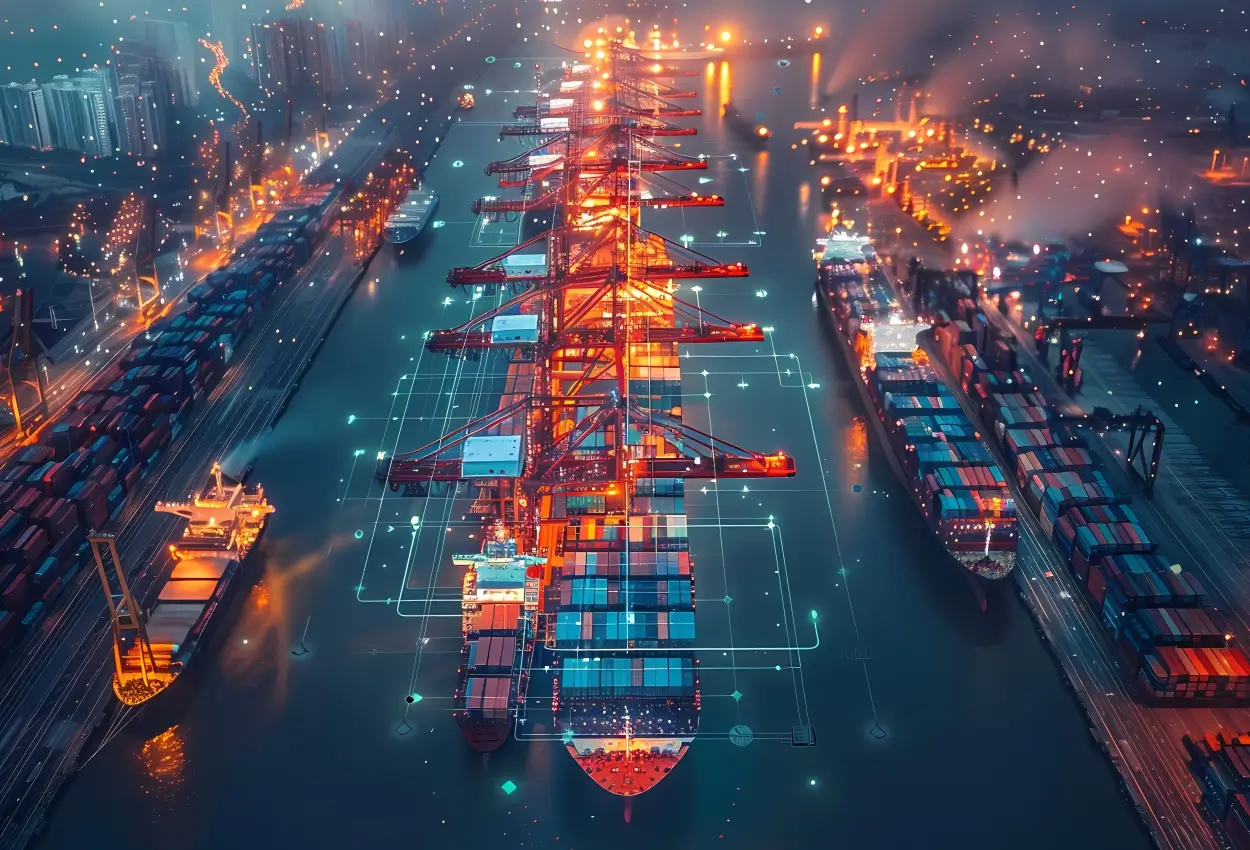The maritime industry is undergoing a technological revolution, with artificial intelligence and automation playing a crucial role in shaping its future. As global trade continues to expand, shipping companies face increasing pressure to enhance efficiency, reduce costs, and improve environmental sustainability. Smart shipping, powered by AI, machine learning, and automation, offers innovative solutions that transform maritime operations, from navigation to maintenance and logistics.
AI and Automation: The Driving Forces of Smart Shipping
AI and automation are being integrated into various aspects of maritime operations, revolutionizing how ships are designed, navigated, and maintained. These advancements aim to enhance safety, efficiency, and sustainability while reducing human error.
Autonomous Ships: The Future of Navigation
One of the most significant developments in smart shipping is the rise of autonomous vessels. These ships, equipped with AI-driven navigation systems, can operate with minimal or no human intervention. They use sensors, radar, LiDAR, and GPS to detect obstacles, assess weather conditions, and adjust their course in real-time.
The world’s first fully autonomous cargo ship, Yara Birkeland, launched in Norway, showcases the potential of self-operating vessels. It reduces fuel consumption and eliminates human error in navigation.
AI-Powered Predictive Maintenance
AI-driven predictive maintenance helps shipping companies minimize downtime and reduce operational costs. By analyzing real-time data from ship engines, sensors, and equipment, AI can predict potential failures before they occur, allowing for proactive maintenance.
Some of the key benefits include preventing costly repairs and delays, extending the lifespan of ship components, and improving safety by reducing mechanical failures.
Smart Port Operations and Logistics
Automation is not just limited to ships; smart ports are also transforming the shipping industry. AI-powered port management systems streamline cargo handling, scheduling, and traffic control, reducing congestion and enhancing turnaround times.
For example, the Port of Rotterdam uses AI-driven logistics to optimize docking schedules and reduce waiting times, while automated cranes in major ports like Singapore and Los Angeles improve loading and unloading efficiency.
AI in Route Optimization and Fuel Efficiency
AI-driven route optimization systems analyze real-time data on weather patterns, ocean currents, and fuel consumption to determine the most efficient shipping routes. This helps companies save fuel, reduce emissions, and ensure timely deliveries.
Shipping giant Maersk has implemented AI-based route optimization, reducing fuel consumption and lowering operational costs.
Maritime Cybersecurity: Protecting Smart Ships
As AI and automation become more prevalent, cybersecurity threats in the maritime sector also rise. Autonomous ships and smart ports rely on interconnected systems, making them vulnerable to cyberattacks.
To prevent security breaches, companies are implementing AI-driven threat detection systems, blockchain technology for secure data exchange, and regular cybersecurity training for maritime personnel.
The Benefits of AI and Automation in Smart Shipping
The integration of AI and automation into maritime operations offers numerous advantages.
- Increased Efficiency: Automated processes reduce delays and optimize operations, while smart routing minimizes fuel consumption and voyage times.
- Enhanced Safety: AI-powered navigation reduces human error in decision-making, and predictive maintenance prevents equipment failures.
- Cost Reduction: Automation lowers labor costs and improves asset utilization, while efficient route planning reduces fuel expenses.
- Environmental Sustainability: AI-driven fuel efficiency reduces carbon emissions, and smart ports promote eco-friendly logistics and waste reduction.
- Challenges and Limitations of Smart Shipping: Despite its many benefits, the adoption of AI and automation in the maritime industry faces several challenges.
- High Implementation Costs: Investing in AI-driven ships, smart ports, and cybersecurity requires significant capital.
- Regulatory and Legal Barriers: International maritime laws need updates to accommodate autonomous shipping, and liability concerns in case of AI-driven accidents remain unresolved.
- Cybersecurity Threats: AI-driven systems are vulnerable to hacking, posing risks to vessel safety and cargo security.
- Workforce Displacement: Automation may reduce the need for human crew members, raising concerns about job losses. Maritime professionals must reskill to adapt to digital transformation.
Conclusion
AI and automation are transforming the maritime industry, making shipping operations smarter, safer, and more sustainable. While challenges such as high costs, cybersecurity risks, and regulatory issues persist, the benefits far outweigh the drawbacks. As AI technology continues to evolve, the future of smart shipping promises to revolutionize global trade, enhance efficiency, and pave the way for a more sustainable maritime industry.
By embracing AI-driven innovations, the shipping industry is not just keeping up with the times—it is steering toward a future of efficiency, safety, and environmental responsibility.



